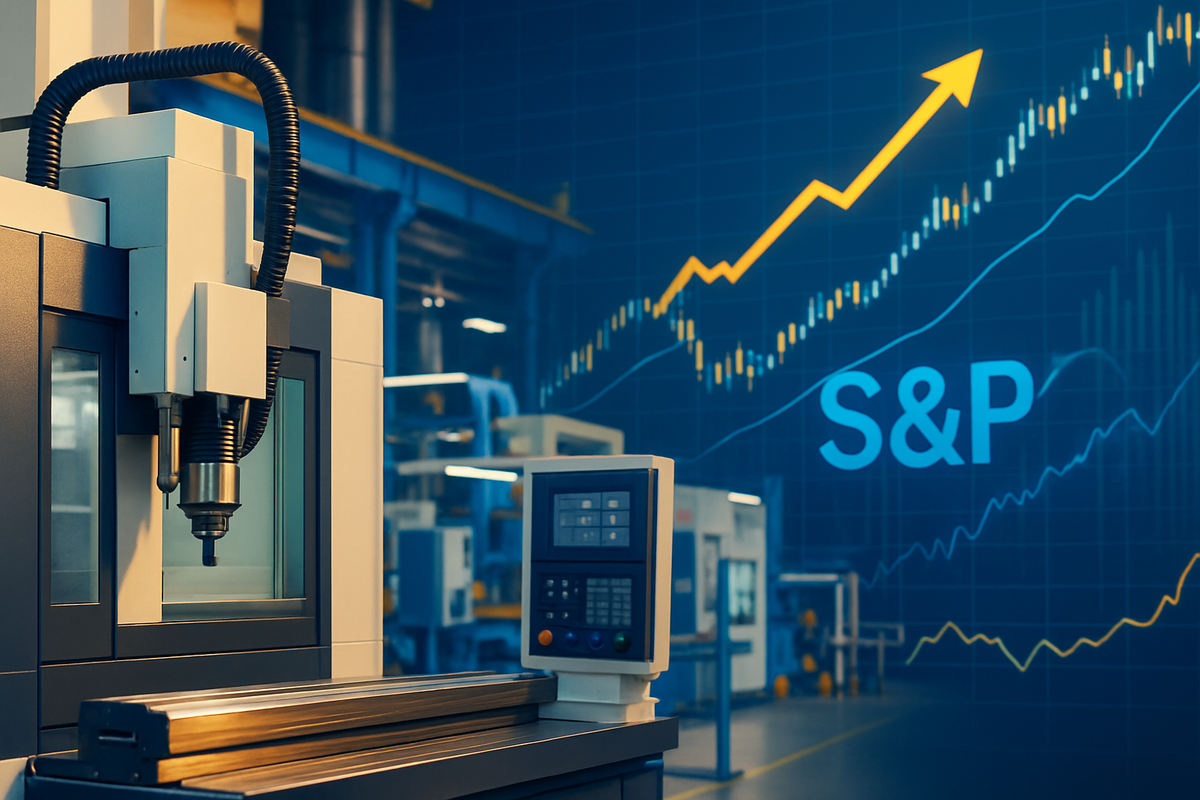
October 21, 2025 – The Industrials sector (NYSEARCA: XLI) of the S&P 500 (NYSEARCA: SPY) has emerged as a powerhouse today, driving significant market gains and bolstering investor confidence. A surge in capital goods companies, fueled by unexpectedly strong earnings reports and optimistic forward guidance, has placed the sector firmly in the spotlight, showcasing its pivotal role in the broader economic landscape. This impressive performance underscores a resilient corporate environment and a renewed appetite for growth-oriented investments, signaling a potentially robust end to the fiscal year.
The sector's stellar day is translating into a notable uplift for the entire S&P 500 index, with several key industrial players reporting figures that have far exceeded analyst expectations. This immediate impact is creating a ripple effect across the market, as investors re-evaluate economic forecasts and shift capital towards areas demonstrating tangible growth and profitability. The strong showing by Industrials today is a powerful indicator of underlying economic strength, suggesting that businesses are investing in their future and demand for industrial products and services remains robust.
Detailed Coverage: Capital Goods Lead the Charge
Today's exceptional performance within the Industrials sector can be primarily attributed to a confluence of positive factors, with strong earnings from capital goods manufacturers leading the charge. Companies involved in producing machinery, equipment, and infrastructure components have delivered standout quarterly results, highlighting robust order backlogs, improved supply chain efficiencies, and effective cost management strategies. This positive momentum has been building over the past few months, as global economic activity gradually accelerated, leading to increased corporate spending on equipment upgrades and expansion projects.
The timeline leading up to this moment has seen a gradual but consistent improvement in manufacturing indices and business confidence surveys. Over the last quarter, purchasing managers' indices (PMIs) in key global economies have consistently remained in expansionary territory, foreshadowing the strong demand now reflected in earnings. Key players and stakeholders involved include major industrial conglomerates, specialized machinery producers, and construction and engineering firms, all benefiting from a supportive macroeconomic environment. Initial market reactions have been overwhelmingly positive, with significant trading volumes and price appreciation observed across many industrial stocks, pushing the sector's overall performance well above other segments of the S&P 500. Analysts are quickly revising their price targets upwards, reflecting newfound optimism.
Companies Poised for Gains and Potential Shifts
The strong performance today spotlights several industrial giants and specialized firms that are poised to capitalize further on this momentum. Companies like Caterpillar Inc. (NYSE: CAT), a bellwether for global economic activity, are likely to see continued investor interest due to their exposure to construction and mining. Similarly, aerospace and defense contractors such as Raytheon Technologies Corporation (NYSE: RTX) and Lockheed Martin Corporation (NYSE: LMT) could benefit from ongoing government spending and a recovering commercial aerospace market, further bolstering the sector's strength. General Electric Company (NYSE: GE), with its diversified industrial segments including aviation and power, stands to gain from improved operational efficiencies and increasing demand in its core markets.
Conversely, companies heavily reliant on highly volatile commodity prices or those facing significant labor cost pressures without the ability to pass on costs might experience more muted gains or even relative underperformance within the sector. While the overall tide is rising, differentiation based on specific market exposure, operational leverage, and pricing power will be crucial. Smaller, less diversified industrial firms might also face challenges if they lack the scale or technological advantage to compete effectively in a rapidly evolving landscape. However, for most established capital goods and diversified industrial players, today's performance signals a period of sustained growth and strong shareholder returns, encouraging further investment and potentially leading to mergers and acquisitions as companies seek to consolidate gains and expand market share.
Wider Significance and Broader Economic Implications
The robust showing of the Industrials sector today is more than just a single day's event; it fits into broader industry trends signaling a sustained period of global economic expansion and renewed corporate investment. This performance suggests that businesses are confident enough in future demand to commit capital to new projects and equipment, a foundational element for long-term economic growth. The ripple effects are significant, potentially boosting demand for raw materials, energy, and logistics services, benefiting partners and suppliers across various industries. A strong Industrials sector often indicates healthy business-to-business (B2B) activity, which is a key driver for overall economic prosperity.
Regulatory and policy implications could also emerge from this trend. Governments might be encouraged to further invest in infrastructure projects, perceiving a receptive and capable industrial base. Trade policies could also be influenced, with a focus on ensuring stable supply chains and competitive export markets for industrial goods. Historically, periods of strong industrial performance have often coincided with economic booms, recalling the post-World War II era or the dot-com boom's infrastructure build-out. While not directly comparable, the current environment shares characteristics of increasing technological integration and a global push for modernization, positioning the Industrials sector at the forefront of this economic evolution.
What Comes Next: Navigating Opportunities and Challenges
In the short term, the momentum generated by today's strong Industrials sector performance is likely to continue, drawing more investor attention and potentially leading to further capital inflows. We could see analysts raising their price targets and ratings for key industrial stocks, further fueling the rally. Over the long term, the sector is positioned to benefit from several macro trends, including ongoing global urbanization, the increasing need for sustainable infrastructure, and the continued adoption of automation and digitalization in manufacturing. Companies that can strategically pivot towards these emerging opportunities, investing in R&D and innovative solutions, will likely outperform their peers.
Potential strategic adaptations required for industrial companies include a continued focus on supply chain resilience, leveraging advanced manufacturing techniques, and expanding into high-growth segments like renewable energy infrastructure or smart factory solutions. Market opportunities will likely emerge in areas such as industrial automation, robotics, and advanced materials. Challenges, however, could include persistent inflationary pressures, potential labor shortages, and geopolitical uncertainties that might disrupt global trade. Investors should monitor key economic indicators, commodity prices, and global trade policies, as these will significantly influence the sector's trajectory. Scenarios range from a sustained bull run driven by strong economic fundamentals to potential corrections if macroeconomic headwinds intensify or corporate earnings fail to meet increasingly high expectations.
Comprehensive Wrap-Up: A Resilient Sector's Lasting Impact
Today's robust performance by the Industrials sector in the S&P 500 is a significant market event, underscoring the resilience and fundamental strength of many public companies within this vital segment. Key takeaways include the critical role of strong capital goods earnings in driving broader market gains and the positive implications for overall economic health. The market moving forward is likely to view the Industrials sector as a leading indicator of corporate investment and global economic activity, making it a crucial barometer for investor sentiment.
The lasting impact of such a strong showing could be a re-rating of industrial stocks, attracting long-term institutional investment and potentially altering portfolio allocations. This event highlights the sector's capacity to adapt to changing economic conditions and capitalize on global growth trends. Investors should watch for continued earnings reports, updates on infrastructure spending, and any shifts in global trade policies in the coming months. The performance of the Industrials sector will be a key determinant of the S&P 500's overall direction, offering valuable insights into the health and future trajectory of the global economy.
This content is intended for informational purposes only and is not financial advice






